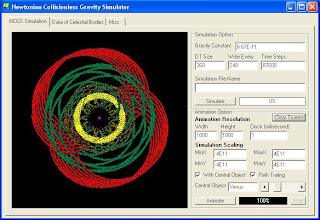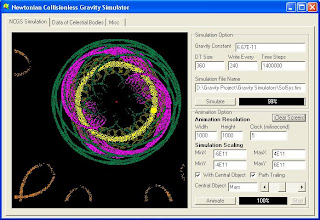The plot result of the movement of planets, as seen from other planets is interesting to study. One of the interesting points is the fact that if a planet orbits the sun in circular orbit, the plot of the sun movement relative to that planet will also form a circular "orbit". This is by no means saying that if a planet orbits the sun, then it is equivalent with sun orbit the planet.
The planet is not inside inertial reference frame, since it is accelerated by Sun’s gravity, which is greater than the gravity of any planet. So the planet change reference frame all time, which is why the “movement” of Sun relative to a planet (assuming that the planet is have mass far less than the Sun), is called imaginary movement.
By putting earth as the centre of the coordinate system used to plot the movement of other planets, we can see an effect usually called retrograde motion. The motion of Mercury for example, resembles a closing and distancing motion, with great knot, caused by the movement of both Mercury and Earth. The “orbit” of Sun, forms a circle with radius equal with the orbit of Earth. The most interesting one for me is the movement of Venus, which have small knot, and the total orbit making a shape resembling a pentagonal flower.
By putting Mercury as the centre of the coordinate system used to plot the movement of other planets, we get the picture above. As Mercury is the innermost planet, the knot formed by the movement of other planets relative to Mercury is big. The total plot resembles something like the eye of a lizard.
The movement of Mars, as seen from Venus is something interesting for me. Instead of forming a circle with lots of knots inside, like the movement of other planets, the movement of Mars relative to Venus forms an 8. This is because the distance of Venus and Mars, when Mars is near the 5’o clock and 11’o clock direction of Venus, is always the same.
The movement of Earth and Venus relative to Mars are the most interesting feature in this plot result for me. As the movement of Mars forms an 8 as seen from Venus, the movement of Venus as seen from Mars is also forming the same shape. This is because the distance of Mars and Venus, when Venus is near the 5’o clock and 11’o clock direction of Mars is always the same. The movement of Earth forms some kind of flower shaped form, with seven sides. This is of course doesn’t have any relationship with the fact that there are flowers in earth. :)
My conclusion about these experiments is that forms, made by the movement plot of an object A relative to another Object B, is always the same with the movement plot of object B, relative to object A.
The movement of other planets as seen from outer planets will be uploaded later.





No comments:
Post a Comment